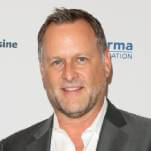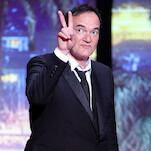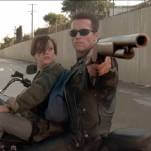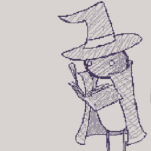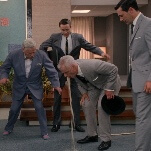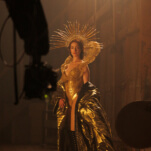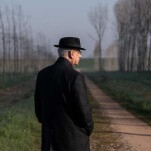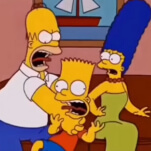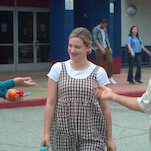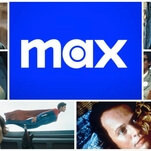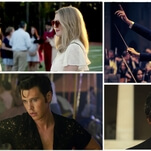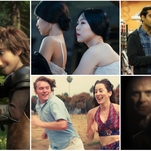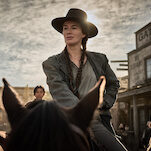I must admit that I'm getting a little addicted to all the user comments that have been popping up lately for this project. So to keep the comments coming in an orderly fashion I've decided to cynically slip at least one of the following sure-fire conversation starters into each entry:
50 Cent and G-Unit suck/50 Cent and G-Unit are the future of hip hop (actually this is more of a conversation starter at hip hop websites)
I'm guessing these desperate ploys for attention may be necessary since I'm not anticipating a tidal wave of interest in this week's entry, the little-loved 1976 Arthur Penn western Missouri Breaks. Now if Thomas McGuane's script for Missouri Breaks had been shot for Roger Corman in 1966 with Warren Oates and Jack Nicholson in the leads and Monte Hellman in the director's chair it probably would have been cheered as a dreamy revisionist romp that gradually darkens into tragedy. But once you cast two generations of Hollywood alpha-males alongside each other for the first and last time the stakes and budget both escalate and your movie becomes a bona fide cultural event. As a movie Missouri Breaks is a breezy, ingratiating trifle. As a cultural event however it's almost intentionally designed to be anti-climactic.
Jack Nicholson here plays an affable outlaw/cattle rustler who uses the proceeds from a train robbery to buy a makeshift little ranch and with it a very thin veneer of middle-class respectability. While Nicholson's gang of goofy-looking character actors (Randy Quaid, Harry Dean Stanton and Frederick Forrest chief among them) look for the next big score Nicholson makes time with the winsome, proto-feminist daughter (Kathleen Lloyd) of genteel local power broker John McLiam.
But when a desperate McLiam hires a cold-blooded "Regulator" (Marlon Brando) to hunt down Nicholson and his gang the blood begins pouring. Here the well-dressed, Laurence Sterne-reading McLiam represents society while Brando, Nicholson and Nicholson's tragi-comic gang that can't shoot straight represent its miscontents.
Though he's billed above Nicholson Brando doesn't appear until thirty-six minutes in and for a film sold as the historic pairing of Nicholson and Brando the two icons appear in very few scenes together. At that point in his career Brando was less an actor than a free-floating mischief-maker, a freelance upsetter posing as an entertainer. I'd like to think that from the seventies onward Brando stopped listening to directors and assistants and his always fuzzy conception of common sense and began taking orders directly from The Great Gazoo, the effeminate green space alien only Fred Flinstone could see.
For example Penn might ask Brando to play a scene a certain way, only to have Brando retort "I'm sorry Mr. Penn, Sir, but the Great Gazoo thinks this scene could be improved if I kissed my horse, sang a little song, stuck a wicker basket over my head and talked like the leprechaun from the Lucky Charms commercial. And while I appreciate your years of experience and unquestioned authority I think the Great Gazoo knows a little more about what's best for me than you do".
I know that sounds a little far-fetched but it's as reasonable an explanation for the jaw-dropping lunacy of Brando's late-period career as any other. All of which is a very long-winded way of saying that Brando's largely improvised performance here is crazy and weird and wrong and inspired and strangely fascinating and has fuck-all else to do with the rest of the movie. Brando talks in a cartoon lilt that suggests he's perpetually on the verge of singing the praises of Irish Spring, sports a look that's part cowboy, part Indian and part foppish dandy and watches birds and sweet-talks his horse when not mercilessly cutting down desperadoes with a futuristic super-weapon of Brando's own devising.
Like Christopher Walken in Envy Brando kidnaps the film and sends it spinning in a weird new direction. Which is a shame, because before Brando shows up and takes over, Missouri Breaks ambles along beatifically as a strangely lyrical Western comedy chockfull of cult screenwriter/novelist Thomas McGuane's oddball poetry. It's the kind of film where even a desperado like Nicholson spews honey to Lloyd like "If there's anybody in this district that got a right to think of themselves as wholesome companionship why it's yours truly." If Wes Anderson wrote a revisionist Western comedy it'd probably look and feel a lot like the film's first half.
For its first half Missouri Breaks excels as a languidly paced, gorgeously filmed, smartly written example of what Quentin Tarantino calls a "hang out movie", films where the characters are so likeable and the mood so winning you want to return to them over and over again simply for the pleasure of their company.
In its weaker second half however the film becomes, like seemingly every revisionist Western before and since, a meditation on the death of the Old West and the gradual encroachment of civilization and the twentieth century. Missouri Breaks begins as a ramshackle comedy and ends as a dour tragedy about the death of the old west with Brando serving as its singularly warped Angel of Death. In Missouri Breaks Brando is the future, baby. And it is murder.
Failure, Fiasco or Secret Success?: Secret Success


